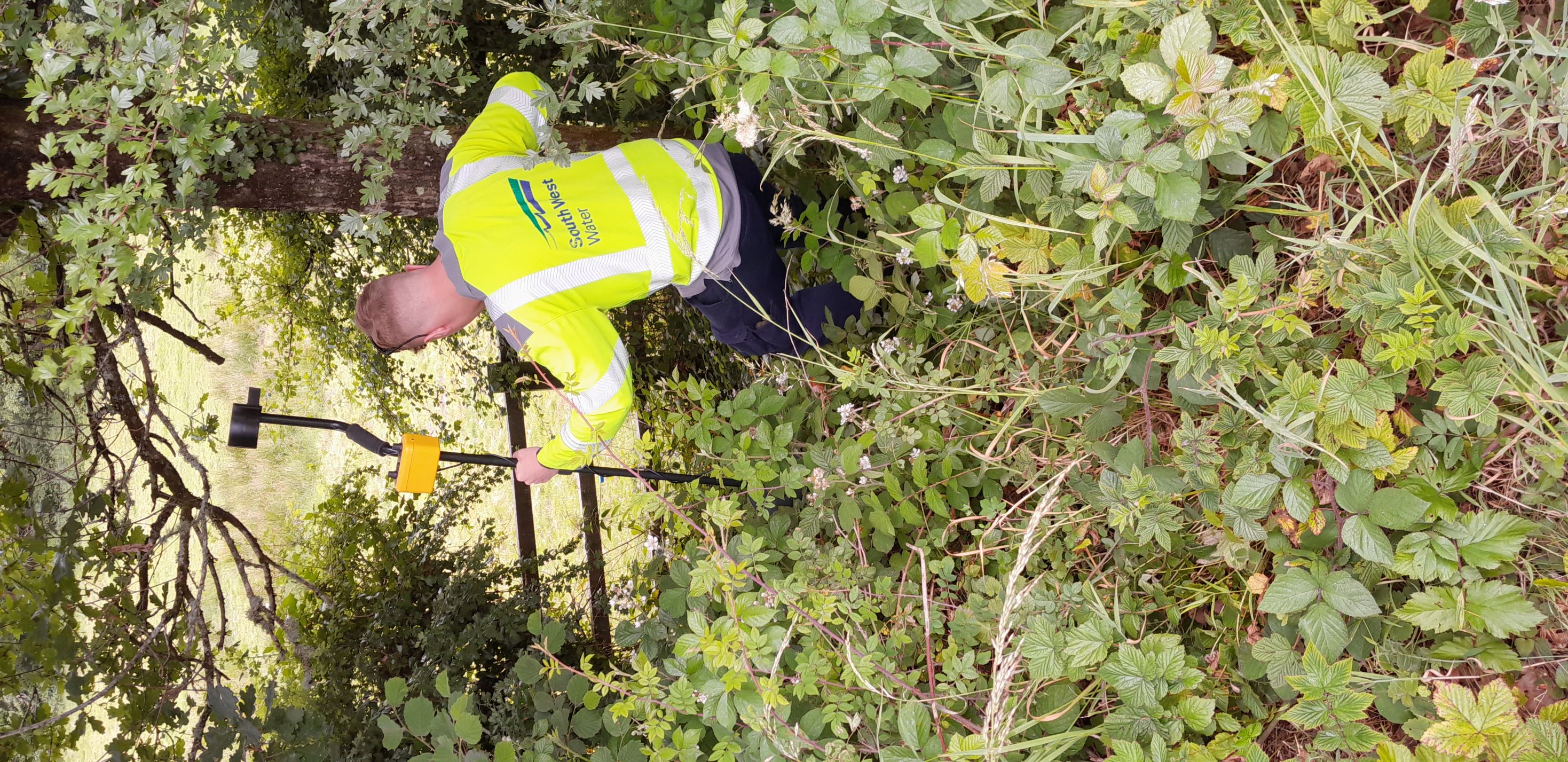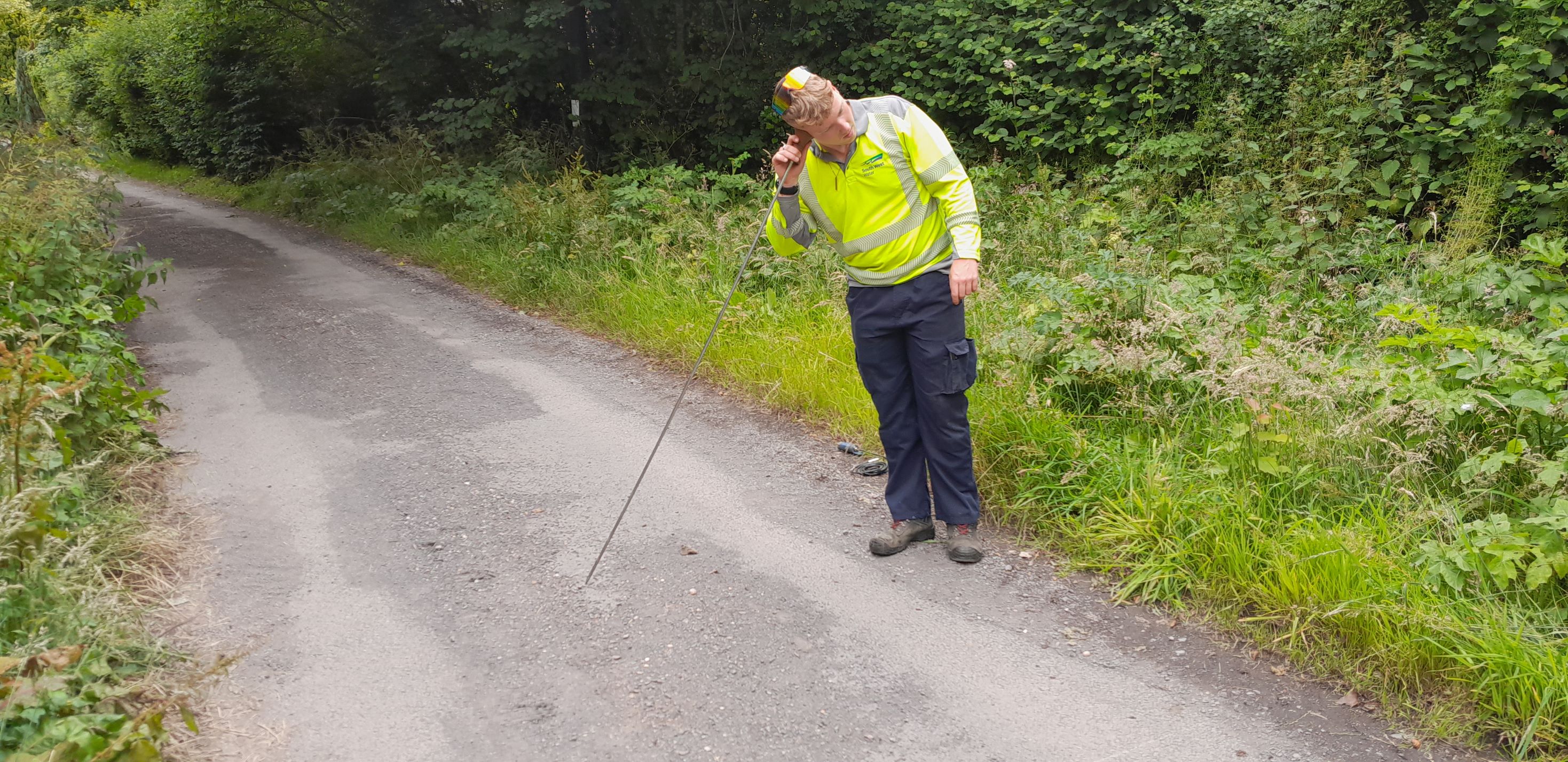Our leak detector, Matt, reveals the reality of his work
18th July 2022

The South West presents a uniquely challenging environment for our water pipes and the people who look after them.
More than 11,000 miles of pipework travels up and down hills, through flood plains, cities, isolated hamlets, moorland and farms, bringing freshly treated water to your taps. The landscape, its geology and its topography in particular, can put stress on the materials the pipes are made of, and sometimes it becomes too much, and the pipes start to leak.
This is when Matt and his fellow leak detectors step in to find the source of the problem.
Working as a leak detector demands a mix of tech know-how, investigative skills, and just plain perseverance and tenacity.
 |
Matt explained: "It might seem obvious, but a leak isn't always necessarily directly below the point it's showing up on the surface. It can take a little while to discover just where it's coming from.” We separate our immense network into around 960 District Metered Areas (DMAs). Each meter sends back daily readings – in some areas up to once every half hour. It’s this data that helps track where the leaks are across the network. Matt said: "Around 50% of the leaks we fix are reported to us by customers when they see them. The other 50% are invisible leaks. They’re bubbling away under the surface, and if it wasn’t for the district meters, we wouldn’t even know they were there.” But the technology can’t tell them exactly where on the pipe leaks are. That’s Matt’s job! The first thing Matt does is find the main itself. “I’ll head out to find the chambers that access the main, so that I can isolate sections of the pipe to survey for the leak. I obviously have a lot of equipment to help me in my search, from mapping software to metal detectors. But finding these access points can be a real challenge. |
"They can be anywhere - hidden in a meadow, buried in a hedgerow, or even in the middle of a busy road."
Opening chambers is always an unknown for leak detectors. “You never know what you’re going to find,” Matt laughs, “insects, huge spiders, baby frogs. I even found a mouse once!” Sometimes, due to their location, they can fill with soil and debris, so Matt has to clear all this first.
|
Once he’s exposed the main, Matt uses various bits of equipment to locate the leak. His most trusty piece of kit is his listening stick which, when placed on the main, receives feedback. Matt is trained to interpret the sound to pinpoint the exact location of the leak. It’s a real skill but some locations make it harder to use. He said: "Rivers and traffic, even people's central heating systems, can sometimes interrupt the signals we get from the water main. Sometimes we have to return in the night-time and measure the area when it's quieter. |
 |
Once he’s exposed the main, Matt uses various bits of equipment to locate the leak. His most trusty piece of kit is his listening stick which, when placed on the main, receives feedback.
Matt is trained to interpret the sound to pinpoint the exact location of the leak. It’s a real skill but some locations make it harder to use.
He said: "Rivers and traffic, even people's central heating systems, can sometimes interrupt the signals we get from the water main. Sometimes we have to return in the night-time and measure the area when it's quieter.
"Once I've located the leak, I'll mark the spot, and then pass the job onto the leak repair team, who then work hard to repair it within 48 hours."
“I really love getting out and about and trying to get to the bottom of these mysteries,” Matt added, “It can be a real challenge but it's great to know I’m doing my bit to protect the environment."
How we’re tackling leaks
We’re determined to reduce leakage levels, and from 2019 to 2025 we’re investing over £100million and doubling our workforce to make that happen.
Matt and the rest of his team are always grateful to every one of you who calls in to report a leak.
He said: "Reporting leaks means we can locate and fix them a lot quicker. So, if you spot something that looks like it may be a leak, don’t assume someone else has reported it already.
"Even in my spare time, if I see water on the road or on a path, I’m thinking to myself, 'Why’s it there, is it a leak?!'”
We’ve halved leakage levels in our region and we're one of the industry leaders but there’s more work to do.
Did you know?
30% of all reported leaks are on private pipework, so be sure to get in touch if you have a leak on your supply.
We’re always incredibly grateful to customers who keep an eye on their household plumbing. You can help by checking your meter for inconsistent readings or dial movements as this could be a sign of a leak. Other things to look out for are persistent damp patches, areas of lush vegetation in dry spells or if you hear a hissing or knocking noise coming from the pipes in your home."
For further information please contact:
Report a leak
We wouldn’t be able to find as many leaks without you. To report a leak, click here or call our free 24-hour leak helpline on 0800 230 0561.
